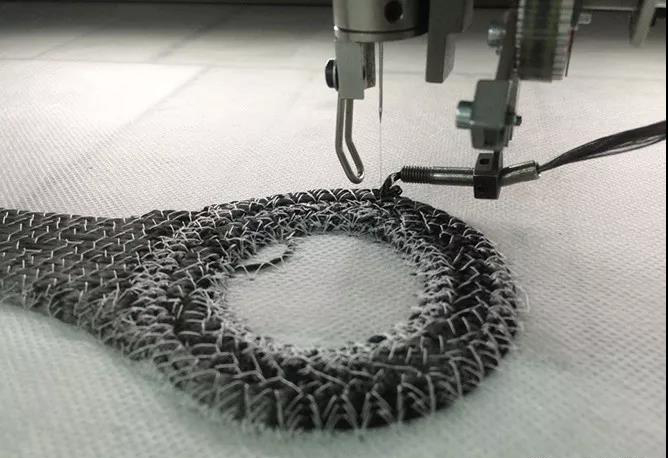The development of TFP technology has made composite materials more widely used in automobiles.
HC Plastics News:
German supplier ZSK has made a series of innovations in an increasingly important carbon fiber composite manufacturing technology that will eventually overcome the cost and productivity challenges that have hampered the widespread use of the material until now.
ZCW0800 8 placement head on ZSK TFP machine
With the development of Tailored Fibre Placement ("TFP", or custom fiber placement), the ZSK process significantly reduces cost, waste and production time, while introducing new features for improved component design and improved recyclability after use. Possible.
The conventional method is to first weave a composite fiber into a vertically aligned form and then cut the fabric into the desired shape. In contrast, TFP aligns functional fibers into bundles where structural performance is most needed and stitches them in place on a compatible base layer. This provides absolute freedom of positioning, allowing the fibers to be placed in the optimal load bearing direction to ensure they do not move during processing and reduce fiber waste to only 3%, rather than producing a typical automotive part Usually 30% to 70% waste.
ZSK machines are able to create three-dimensional preforms using TFP technology, which matches the final shape of a typical automotive component.

Create a suspension link preform using TFP technology on a ZSK single-head machine
ZSK has improved the TFP approach through several patent innovations that accelerate fiber deposition, enhance versatility and simplify the design process.
Its improvements to the process include:
★ Fast fiber placement reduces the stitching time;
★ Fiber supply unit doubles the fiber deposition rate and allows simultaneous deposition of different fibers;
★ Automatic switching between different materials;
★ZSK pneumatic cutting system, which can automatically cut wire and fiber;
★ Advanced design code to ensure perfect repeat of the results, even automatic and even control of the zigzag stitching.
TFP allows the use of hybrid fibers to conveniently produce composite preforms, such as optical or metallic materials that provide special properties such as electrical continuity or resistance. In this way, bare antenna wires and insulated feeders have been combined to form an RFID component. In addition to optical and wire assemblies, TFP can also incorporate a polymer blended with carbon fibers that are subsequently melted during the forming process to form a matrix material, avoiding the need for resin fillers, speeding up the production of complex parts, and improving the resin. Fiber distribution, especially at the end of the mold.
At present, the difficulty in recovering the used composite material can be overcome by selecting a suitable polymer to re-melt it during the recycling process, thereby simplifying the separation. ZSK can provide expertise to help automotive suppliers develop prototypes and build new TFP facilities, and they can also recommend a professional manufacturer network to jointly develop TFP components. ZSK also leverages cloud-based and off-line quality control solutions, as well as an industry-connected 4.0 solution (MY.ZSK) to provide continuous production support and evaluate critical data in the production process. 
Editor in charge: Yao Chunlin
Cat climbing tree tower,Big Climbing Cat Tree,Cat climbing tree for indoor cats,Cat climbing tree,Cat Tree Furniture
Dongguan Maimeng Cultural Communication Co., LTD , https://www.icollectoys.com